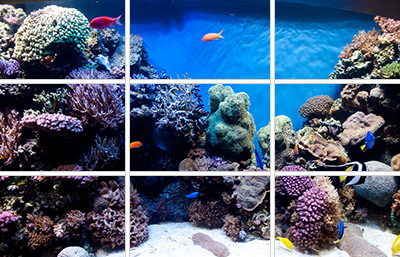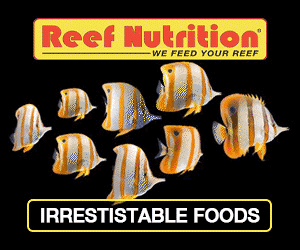
Using the Rule of Thirds to aquascape your reef will create a more visually appealing aquarium
Aficionados of freshwater planted aquariums have long understood that observing certain rules of composition when aquascaping with plants, rocks, driftwood, and other features can have a tremendous impact on an aquarium’s overall aesthetic impression. While we reefkeepers haven’t traditionally placed much emphasis on composition in our aquascaping approach—at least not in a formal sense—we can certainly enhance our enjoyment of the hobby by implementing some of the same rules.
Among the most important composition rules is the “Rule of Thirds.” To apply the Rule of Thirds, imagine that a grid pattern consisting of two equidistant vertical lines and two equidistant horizontal lines is superimposed over the front of your tank. This grid creates nine equal-sized, rectangular sections and visually divides the image in front of you into thirds both vertically and horizontally. Picture that famous image at the beginning of The Brady Bunch TV series (sans the Bradys and Alice, of course), and you’ll have the general idea.
Great, so you’ve got a mental grid floating in front of your tank and the theme to The Brady Bunch running in a constant loop through your head. Now what? Well, according to the Rule of Thirds, compositional elements—in this case, aquascaping elements and sessile invertebrates—should be placed along the grid lines and strong focal points should be positioned at points where the lines intersect. For our purposes, a strong focal point could be a particularly impressive coral specimen, a prominent rock projection, etc. MORE










0 Comments